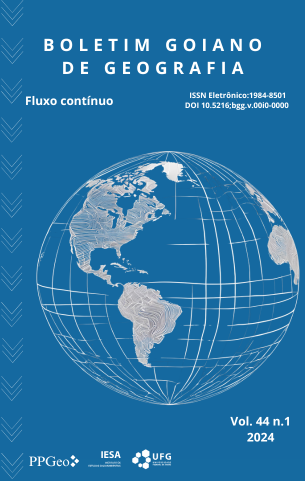Correlation between COVID-19 contagion and flow through public transportation
spatial analysis in the municipality of Araraquara (SP)
DOI:
https://doi.org/10.5216/bgg.v44i1.76433Abstract
Many studies emphasize the relationship between agglomeration of people and the spread of the SARS-CoV-2 (COVID-19), however, studies specifically investigating the flow of contamination are scarce. In view of this scenario, the aim of this work is to investigate the influence of the circulation and flow of people on public transport in increasing the number of cases of COVID-19. The methodology used consisted of a bibliographic review and a comparative spatial analysis of the evolution of the epidemiological situation in Araraquara city, São Paulo state, and the trips of the public transport modal. There was a sharp increase in cases of COVID-19 in places with the highest number of trips, mainly in the flows made by public transport. The centralization of these flows to the Central Integration Terminal intensifies the possibility of further contamination. It was possible to infer that the places with the highest growth in the number of cases are contained in the zones with the highest number of origin trips and the places with the highest percentage growth in the number of cases are in the areas with the highest number of destination trips. Finally, it is concluded that the dissemination of COVID-19 is intrinsically related to the flow of people, making even more evident the greater vulnerability in the displacements made by public transport.
Downloads
Downloads
Published
How to Cite
Issue
Section
License
Authors will not receive any payment for publishing their work in Boletim Goiano de Geografia. Therefore, they must grant all rights to the journal. However, they are entirely and exclusively responsible for the published contents, and editors are free to make corrections or adjustments to texts in conformity with publication guidelines.







